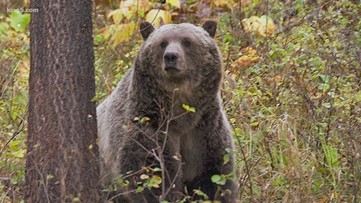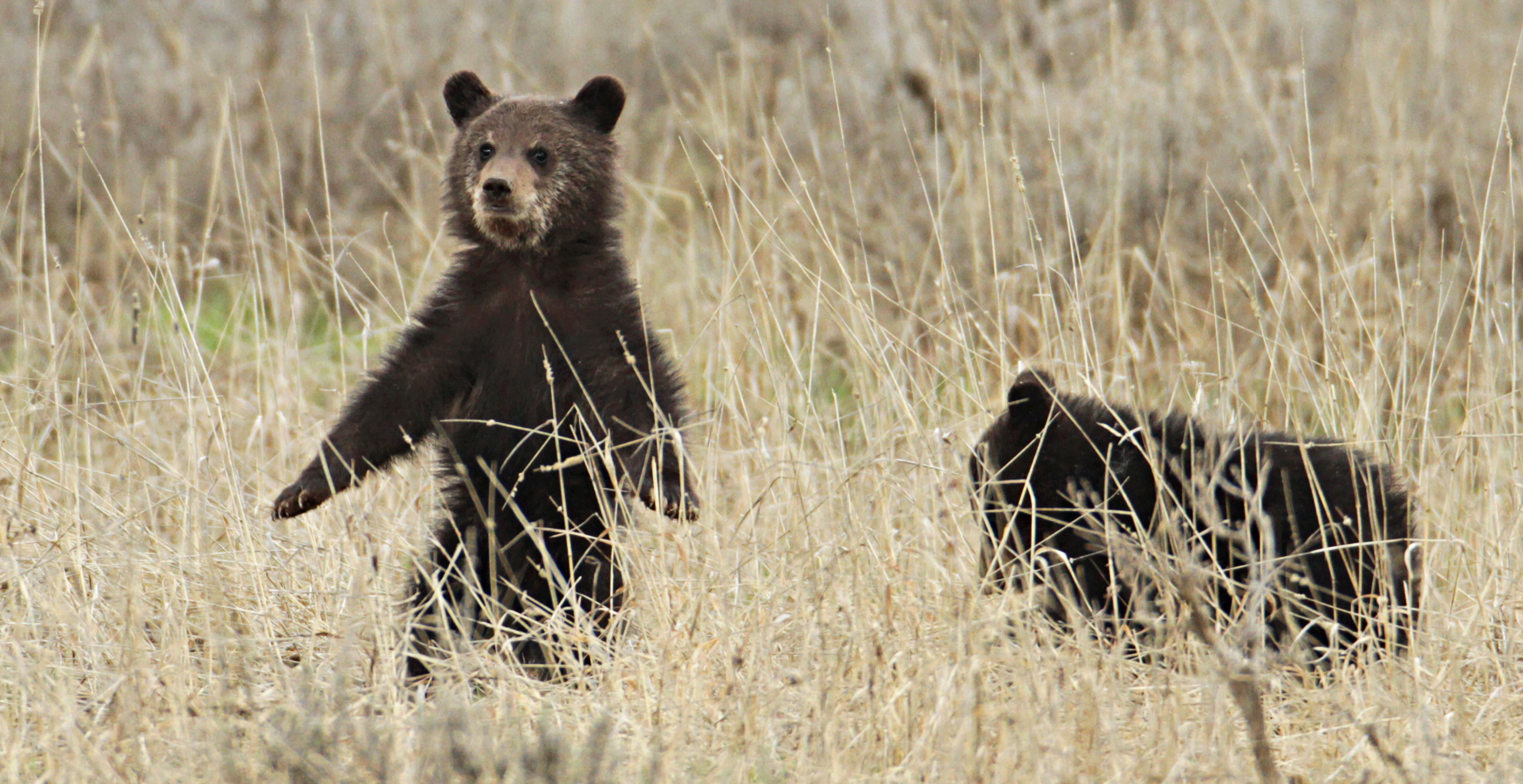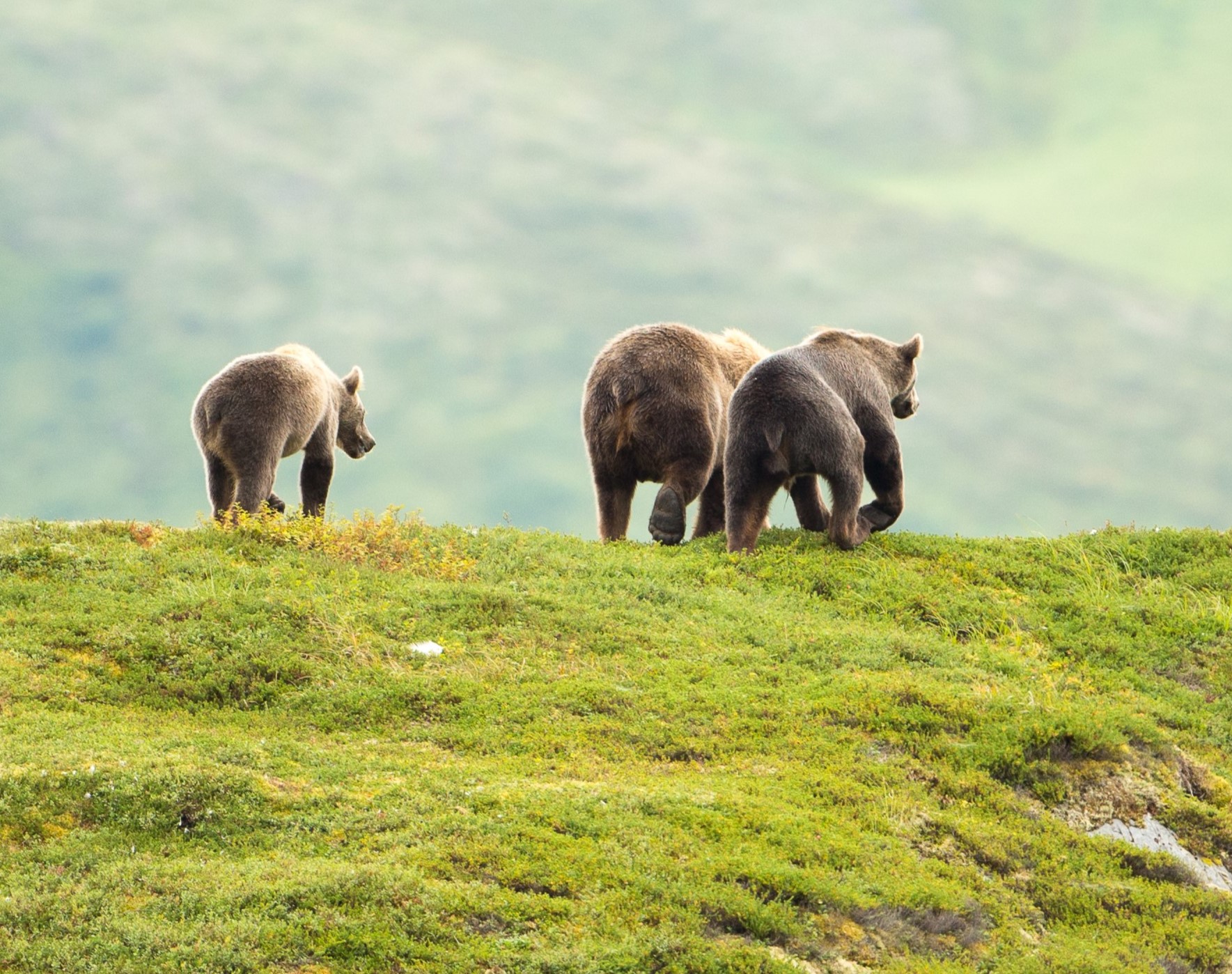The Return of Grizzly Bears: A Triumph for North Cascades and Wildlife
- Update Time : Thursday, April 25, 2024

Grizzly bears are officially returning to North Cascades, as announced by the Park Service and US Fish & Wildlife. This exciting development marks a significant conservation effort to restore the bear population in the region.
With their majestic presence and role in the ecosystem, grizzly bears are a crucial part of the North Cascades wilderness. The reintroduction plan aims to reestablish balance and promote biodiversity in the area. Through collaborative efforts and careful management, this initiative holds promise for the future of both the bears and the natural habitat.
As these magnificent creatures make their comeback, it’s a reminder of the importance of preserving our wildlife and protecting their natural habitats for generations to come.

Credit: www.king5.com
The Return Of Grizzly Bears
Grizzly Bears are making a comeback in North Cascades National Park, as announced by the Park Service and US Fish & Wildlife. This marks a significant milestone in the conservation efforts to restore the population of these majestic creatures.
Historical Extinction
Grizzly Bears faced near-extinction in the North Cascades region due to human activities and habitat loss. Once abundant in the area, their numbers dwindled to critically low levels, prompting urgent conservation interventions.
Conservation Efforts
The reintroduction of Grizzly Bears in North Cascades is a result of dedicated conservation efforts by park authorities and wildlife agencies. Through strategic planning and public support, steps have been taken to ensure a safe and sustainable return for these iconic animals.

Credit: www.nps.gov
Ecological Impact
Grizzly Bears are officially making a comeback to North Cascades National Park, bringing with them a significant ecological impact. This announcement by the Park Service and US Fish & Wildlife is not only exciting news for wildlife enthusiasts but also holds tremendous importance for ecosystem restoration and behavioral interactions in the area.
Ecosystem Restoration
The reintroduction of Grizzly Bears in North Cascades National Park is a vital step towards ecosystem restoration. These apex predators play a crucial role in maintaining ecological balance by regulating herbivore populations and shaping the landscape through their foraging activities. With their return, the park’s natural habitat will be revitalized, creating a harmonious environment where flora and fauna can thrive.
Behavioral Interactions
The arrival of Grizzly Bears in the North Cascades will also spark intriguing behavioral interactions within the ecosystem. As top predators, they will influence the behavior of other species, such as deer, elk, and smaller carnivores. The presence of the bears will impact the movement patterns, feeding habits, and even the reproduction strategies of these animals, leading to a cascade of effects throughout the food web.
The reintroduction of Grizzly Bears also holds implications for human interactions with nature. Visitors to North Cascades National Park will have the unique opportunity to observe and appreciate these magnificent creatures in their natural habitat. It is crucial for both park officials and the public to understand the importance of responsible wildlife viewing and respecting the bears’ space and needs.
In conclusion, the return of Grizzly Bears to North Cascades National Park signifies a significant ecological impact. By restoring the balance of the ecosystem and influencing behavioral interactions, these bears play a crucial role in the park’s natural dynamics. As efforts continue to ensure the successful reintroduction, it is our responsibility to appreciate and protect these remarkable animals and the environment they call home.
Challenges And Concerns
The re-introduction of Grizzly Bears to the North Cascades poses several challenges and concerns that require careful consideration.
Human-grizzly Conflict
Human-Grizzly interaction must be managed to prevent conflicts and ensure safety for both species.
Habitat Encroachment
Protecting natural habitats is essential to preserve the ecosystem for Grizzly Bear’s reintroduction.
Public Perception
The return of grizzly bears to the North Cascades is an exciting development. It’s essential to address public perception for success and stakeholder support.
Community Engagement
Engaging the local community is key to fostering a positive attitude towards the return of grizzly bears. Strong relationships and open communication enhance understanding, dispel myths, address conflicts.
Effective community engagement involves:
- Hosting town hall meetings and open forums to provide a platform for residents to voice their opinions and concerns.
- Establishing community advisory boards consisting of local leaders, organizations, and stakeholders to facilitate ongoing communication.
- Regularly updating and educating the community about the reintroduction program through newsletters, websites, and social media platforms.
Education And Awareness
Education and raising public awareness are crucial components in shaping a positive perception of grizzly bears’ return to the North Cascades. Accurate information helps dispel misconceptions and promotes a deeper understanding of the ecological importance of these majestic creatures.
Strategies for education and awareness include:
- Developing educational programs tailored to schools, community centers, and outdoor enthusiast groups to provide factual information about grizzly bear biology, behavior, and their role within the ecosystem.
- Implementing interpretive centers and signage along trails and in visitor centers within the park to inform visitors about the ongoing reintroduction efforts and the importance of coexistence.
- Collaborating with local media outlets to share success stories, research updates, and interviews with experts to promote a positive narrative around grizzly bear reintroduction.
Policy And Management
Policy and management play a crucial role in the re-establishment of grizzly bears in the North Cascades. The careful designation of protected areas, population monitoring, and collaboration between the National Park Service and US Fish & Wildlife are essential components in ensuring the success of this wildlife conservation effort.
Protected Areas Designation
The designation of protected areas is vital to the successful reintroduction of grizzly bears in the North Cascades. These areas will provide a safe and natural habitat for the bears to thrive and ensure their protection from human interference. The National Park Service and US Fish & Wildlife have collaborated to identify and designate these areas, laying the groundwork for the safe re-establishment of the grizzly bear population.
Population Monitoring
Population monitoring is a critical aspect of the reintroduction process. By closely monitoring the grizzly bear population, wildlife experts can assess the success of the reintroduction efforts and make informed decisions regarding future management strategies. Regular population monitoring will allow researchers to track the growth and distribution of the grizzly bear population and identify any potential challenges or threats that may arise.
Economic Implications
Grizzly Bears making a return to the North Cascades has significant economic implications, affecting various sectors. Let’s delve into how this reintroduction will impact the region’s economy.
Tourism And Recreation
Grizzly Bears in North Cascades National Park will draw visitors, boosting local tourism and revenue for hotels, restaurants, and tour operators.
Agricultural Impact
The reintroduction of Grizzly Bears may pose challenges to ranchers and farmers, potentially causing livestock depredation. This could result in financial losses due to damaged crops and livestock. However, efforts will be undertaken to implement effective mitigation strategies to minimize such impacts.
Global Significance
The reintroduction of grizzly bears in North Cascades National Park by the US Fish & Wildlife Service signifies a major advance in preserving this apex predator and restoring ecological balance, inspiring global conservation efforts.
Conservation Success Story
achievement for wildlife conservation efforts.
Lessons For Wildlife Management
valuable insights for effective wildlife management strategies.

Credit: www.nps.gov
Future Outlook
The Future Outlook: Grizzly bears are making a much-anticipated return to the North Cascades. This exciting announcement, jointly made by the National Park Service and the U.S. Fish & Wildlife Service, signifies a significant step towards restoring the ecological balance of the region.
Expansion Potential
Expansion of the Grizzly Bear Population: The reintroduced grizzly bears in the North Cascades have immense potential to expand and flourish, leading to a beautiful transformation of the ecosystem eagerly awaited by conservationists and nature enthusiasts.
Continued Conservation Efforts
Steadfast Conservation Efforts: Reintroducing grizzly bears is a celebration and testament to devoted wildlife conservationists’ ongoing efforts to protect them and their habitats.
Frequently Asked Questions
Are Grizzly Bears Being Reintroduced In Washington?
Yes, grizzly bears are being reintroduced in Washington to restore the population and ecological balance.
Why Do Fish And Wildlife Want To Reintroduce Grizzly Bears?
Fish and wildlife want to reintroduce grizzly bears to restore balance in ecosystems and protect biodiversity.
Where Are They Reintroducing Grizzly Bears?
Grizzly bears are being reintroduced in select areas for conservation and ecological balance.
Conclusion
Park Service and Fish & Wildlife are working together for a sustainable future. Let’s celebrate this positive step towards conservation and wildlife preservation. Stay tuned for more updates on this incredible journey.
Join us in protecting our natural treasures!


















Leave a Reply